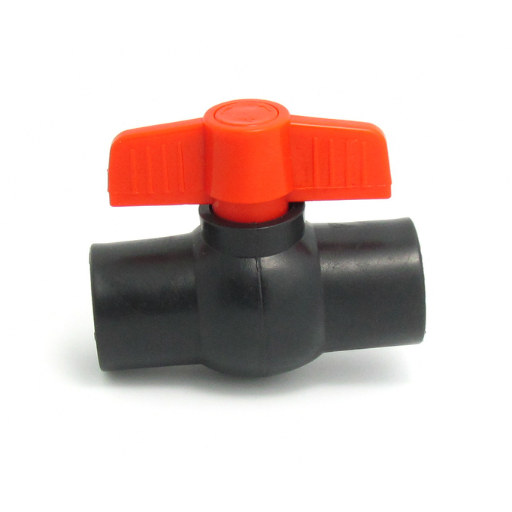Welcome to our ultimate guide on socket fusion ball valves for industrial applications. This article will delve into these valves’ critical role in various fields, such as water and wastewater treatment, chemical processing, and manufacturing. Socket fusion ball valves are famous for being long-lasting, easy to install, and having great sealing capacities, making them the choice in many industrial facilities. We will look at socket fusion basics, advise why it is better to use this type of valve instead of conventional types and provide hints on choosing the right one for your specific case. Whether you work in the industry or are just interested in this vital part of the system, we want to give you enough information to make good decisions regarding socket fusion ball valves.
What is a Socket Fusion Ball Valve?
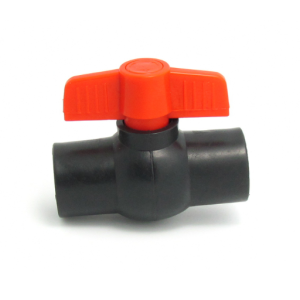
Image source: https://www.pe-fittings.com/
A socket fusion ball valve is a type of valve made using a process called socket fusion technology, which creates secure leak-proof joints between pipes and valve parts. This is done by heating the pipe and the valve’s socket until they melt, allowing them to cool and solidify together, thus creating solid bonds. Socket fusion ball valves have a hollow ball with an opening through which fluid flows. They are used extensively in sectors like water treatment and chemical processing because they can be relied on, are easy to install, and are resistant to pressure-caused corrosion, too. They suit perfectly those operations where strength & efficiency matter most.
Understanding the Fusion Process
Several critical steps are involved in the fusion process of socket fusion ball valves to guarantee a safe and leak-free connection. Firstly, the valve socket and the corresponding pipe are prepared by wiping their surfaces clean to remove any impurities. Then, a specialized machine is used for socket fusion to heat the ends of the valve and pipe until they attain the right temperature for fusing (usually between 200–260 degrees °C or 392–500 degrees °F). Subsequently, these components are quickly removed from the heater and joined together. They bond as they cool down into an inseparable whole that can withstand high pressures and chemical corrosion. This procedure improves the strength and lifespan of connections and mitigates instances of leaks typically associated with other joining methods.
Types of Socket Fusion Ball Valves
Different types of socket fusion ball valves exist that are designed for particular applications. The most typical ones include:
- Standard Socket Fusion Ball Valves: These are common valves suitable for general purposes that reasonably control flow in piping systems. These materials commonly include PVC or CPVC, which can be utilized in many chemical processes.
- Full-Bore Socket Fusion Ball Valves: They consist of a ball with a bore size equal to the pipe diameter, thus permitting significant flow rates with minimum losses due to frictional resistance. Where high flow rates are needed, one will find full-bore valves.
- Reduced-Bore Socket Fusion Ball Valves: These valves have small diameter bores, which may be necessary where limited space or a reduced flow rate is acceptable. Smaller tubing systems often utilize them when cost-effectiveness is a primary concern.
It is crucial to choose an appropriate valve type among the different fluid types handled by each kind and system pressure levels for its performance in intended application contexts.
Advantages of Using Socket Fusion End Connections
For many piping applications, socket fusion end connections offer some advantages.
- Strong and Leak-Free Joints: Socket fusion welding creates a permanent bond that is robust and leak-free, significantly reducing the risk of joint failure compared to mechanical connections.
- Resistance to Corrosion and Chemicals: PVC and CPVC are typical socket fusion materials that are exceptionally resistant to corrosive substances; hence, they can sustain different environments for long periods.
- Simplified Installation: A quick method that does not involve additional fittings or tools, the socket fusion method simplifies installation processes, reducing labor costs.
- Versatility: The size range and different types of pipe material make this type suitable for use in various systems such as water distribution networks or industrial chemicals production facilities.
- Reduced Maintenance: The endurance of such joints from damage due to leakage makes less frequent repairs necessary, thus lowering running expenditures and ensuring better system reliability.
How do you select the correct ball valve for your needs?
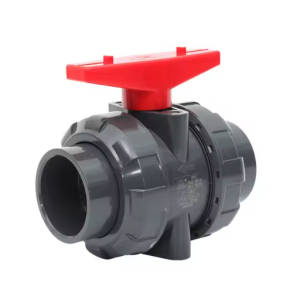
There are several vital factors you should consider when choosing the correct ball valve for your specific application:
- Size and Dimension: Consider the appropriate size for the valve based on pipe diameter as well as flow requirements, and compatibility with existing pipes
- Pressure and Temperature Rating: Check your operating pressure and temperature conditions. Avoid selecting a ball valve that could fail under these parameters.
- Material Compatibility: Choose materials that are compatible with the fluid being hauled. For example, consider PVC, CPVC, or other materials that resist corrosion or chemicals.
- End Connection Types: Determine what end connections you need for your installation. You might have options such as threaded, flanged ends, or even socket fusion, which should match your piping configuration accordingly.
- Actuation Method: Decide whether manual operation or automated control is needed. This will influence the design and cost of the ball valve.
- Regulatory Compliance: Ensure you comply with relevant industrial standards/regulations applicable in your case.
Considering all these factors, you can be assured that you will get a valve capable of enhancing system performance and reliability, thus improving your company’s overall productivity.
Factors to Consider: Material and Size
When selecting a ball valve, it is important to consider material and size, as these are both critical aspects that significantly impact its functionality and durability.
- Material: The material of the ball valve must be compatible with what it will handle. Among the commonly used materials are brass, stainless steel, and PVC. Brass is widely chosen for water and gas applications; stainless steel works well in corrosive or high-pressure situations, while PVC is fit for chemical handling at low pressures. The type of material also affects how well the valve can withstand temperature changes over time and corrosion, all of which directly influence its lifespan.
- Size: The size of the ball valve must match the required flow rate for the application. If too small, it may limit flow, restricting efficiencies, whereas an oversized one leads to hydraulic losses. This should encompass consideration of pipe diameter, necessary rate of flow, and specific application requirements.
By carefully considering both material and size, you can ensure that the selected ball valve meets operational requirements while providing optimal functionality and reliability.
Comparing Polypropylene, EPDM, and PVDF
For instance, polypropylene (PP), EPDM (Ethylene propylene diene monomer), and PVDF (Polyvinylidene fluoride) each have distinct advantages when used as materials in manufacturing ball valves.
- Polypropylene: It has excellent resistance to many chemicals, is lightweight and is cheaper compared to other options available. Its use is mainly limited to less demanding applications, especially those involving acids/bases, but it might not work very well with extreme temperatures or high pressures.
- EPDM: This rubber-like elastomeric compound provides excellent weathering resistance, UV protection, and good thermal stability, making it suitable for outdoor applications or environments with fluctuating temperature conditions. EPDM performs best in water systems but cannot be used with hydrocarbon or aromatic solvents.
- PVDF: PVDF is highly chemical resistant and stable even at elevated temperatures, making it a premium choice in harsh environments that might involve aggressive chemicals or high-purity conditions. It is, however, more expensive than other options, although its durability and reliability usually make it worth the cost.
The choice should be based on your specific environmental conditions, fluid compatibility, and performance requirements for the best results that ensure the long-lasting functionality of the ball valve.
Full Port vs. Reduced Port Valves
The choice of full port versus reduced port designs is crucial when considering ball valves, and it is usually contingent upon the application’s specific needs.
- Full Port Valves: These valves have an internal diameter equal to the pipe’s diameter, enabling unrestricted flow. This design reduces pressure loss and eliminates turbulence, making it appropriate for situations where maximum flow capacity and efficient fluid dynamics are required. Full port valves are often recommended for systems that regulate flow and lowering energy costs.
- Reduced Port Valves: Conversely, reduced port valves have a smaller internal diameter than full port valves, which can lead to increased pressure drop/fall and flow restriction. They are frequently more compact and cost-effective than their counterparts, making them suitable, especially in conditions with space or budget constraints where there is no need for a maximalized stream rate. They are commonly used in low-pressure applications or systems which tolerate some degree of loss in flow efficiency.c
In summary, choosing between a full port valve and a reduced port valve should be based on the required rate of flow, specifics about the system under consideration, and the overall project budget for the desired optimal performance for each case.
Installation and Maintenance Tips for Socket Fusion Ball Valves
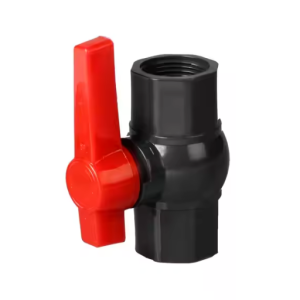
When socket fusion ball valves are installed, properly clean and remove any foreign matter from the ends of pipes before fixing them into these valve sockets. Both ends should be aligned appropriately before introducing heat through compatible fusion machines. To get a strong bond, adhere strictly to heating times stated by manufacturers for given materials after heating. Therefore, after installation, enough cooling time should be allowed before subjecting the system to pressures due to joint failure prevention.
For maintenance, always check if there are any leaks on the valves, especially around the fusion joints, and whether they show signs of wear over time. Ensure cleanliness around the whole area by removing dirt so that it won’t interfere with operations. Depending on what type of ball valve you have installed, it may be better to replace it rather than repair it because of the nature of socket fusion joints. Keeping a maintenance log is also beneficial in tracking the condition and performance of ball valves over time.
Step-by-Step Installation Guide
- Preparation: Gather all necessary materials, such as the ball valve for socket fusion, pipes, compatible fusion machine, and protective equipment, to ensure that the work area is clean and properly ventilated.
- Cut the Pipes: To connect to the valve, use a pipe cutter to make clean and straight cuts at the ends of the pipes. Make sure to produce smooth edges without burrs.
- Clean the Surfaces: Use a suitable cleaner or cloth to wipe off any impurities on both pipe ends and valve sockets that can compromise their welding.
- Aligning the Joint: The tube must be inserted in the appropriate direction into the socket of the fitting. Avoid twisting it, as this affects how well it sticks together in the welding process.
- Heat Application: Arrange a suitable fusion machine following the manufacturer’s recommendations. Heat both pipe ends and valve sockets for the recommended time, ensuring the right temperature range for the used material type.
- Fusion Process: Once heated, quickly push in the tube, applying uniform pressure across its circumference. It is also advisable to leave such a connection untouched for a specific period before the materials bond enough.
- Cooling Time: It is recommended that the joint be allowed to remain unbothered for a prescribed term before system testing or pressurizing such systems, guaranteeing the joint zone’s soundness.
- Inspection: Once cooling has occurred, examine visually for any gaps or irregularities within this junction. The valve should be free from obstacles during movement.
-
Documentation: Keep records concerning installation procedure, including deviations from the standard guidelines and valve performance. This can serve as a reference when doing future repairs or checking faults.
Common Installation Mistakes to Avoid
Several common errors that could jeopardize the integrity of the system are often made during socket fusion ball valve installation.
- Inadequate Surface Preparation: If poorly cleaned, dirt or debris on pipe and valve ends can cause poor fusion and possible leakage. Always ensure that no contaminants, including dust and dirt, are on such surfaces before starting the heating process.
- Incorrect Temperature Settings: Using a too-low or too-high temperature may result in improper melting of the materials. Always follow the manufacturer’s directions for proper temperature settings and hold times.
- Misalignment: If you fail to align it properly as you fix it, weak spots will develop at the joint. Before heating, align the two parts accurately to ensure a tight fit and good seal.
Knowing these pitfalls will make your pipework systems more reliable and last longer.
Maintenance Tips for Longevity
To keep socket fusion ball valves, along with their associated piping systems, working fine for a long time, consider the following maintenance tips:
- Regular Inspections: Check for wear, corrosion, or leakages through regular visual inspection exercises. This helps stop significant issues before they happen.
- Proper Cleaning: Debris should be continually discarded from around the valve and surrounding pipes lest they block or speed up their wearing out due to rusting.
- Lubrication: Lubricate moving sections of the valve frequently so that they function smoothly while minimizing friction, thus extending its life span.
- Monitoring Pressure Levels: Ensure that system pressure does not exceed recommended limits, as this can stress joints and eventually cause breakage.
- Temperature Control: Intense temperature fluctuations should not occur, affecting material integrity and causing probable leaks in it
By doing this kind of servicing, you will help your socket fusion ball valves perform better over time, hence increasing the efficiency of your entire pipeline.
Where to Buy Socket Fusion Ball Valves?
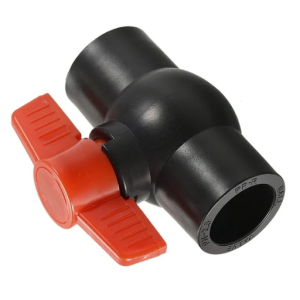
There are many places where you can buy socket fusion ball valves. Sometimes, local plumbing stores have some right-for-the-job valves. They will also have various options in different sizes and materials from specialized HVAC or industrial retailers. These online markets include convenience, competitive prices, and customer reviews that guide users’ choices. Always ensure the vendor has quality products and good customer service to support your needs.
Shop by Price and Manage Your Account
When shopping for socket fusion ball valves, it’s important to consider price and how easy it is to manage your account. The best three websites where you can purchase these valves usually give you an easy time:
- Amazon: Go here if you want to buy a socket fusion ball valve within your budget because they have varieties at very competitive prices. Customers also enjoy comparing brands and reading about them before making purchases, among other activities, through their accounts.
- Home Depot: Known for its wide variety of plumbing supplies, Home Depot provides an option for shopping by location or delivery date for in-store pickup or home delivery. Account management is quite simple, as this allows tracking of purchases along with a product-saving feature.
- Grainger: This reliable company is an industrial supplier that provides socket fusion ball valves suitable for various uses. The website has tools that facilitate searching by price and specifications, plus there is a comprehensive account management system covering orders, invoicing, and inventory control.
These sites will not only ensure that you find the best bargains but also allow you to conveniently keep track of your purchases according to your unique requirements.
Selected for Comparison: Top Sellers
- Amazon: Commonly ranked as an optimal option, Amazon has numerous socket fusion ball valves available, including comprehensive customer reviews and low cost, making them less expensive. There is also a facility for returning customers to order these products easily through their accounts.
- Home Depot: Home Depot is known for its emphasis on home improvement and plumbing supplies. They provide customers with various options for socket fusion ball valves. It is convenient to make price comparisons by visiting their site, which allows one to filter out items that are not in stock and choose between shopping in-store or getting the delivery at home.
- Grainger: This company offers an array of socket fusion ball valves suitable for different industries; they especially appeal to industrial users. Their website has tools for filtering by price range and specification, along with robust account management tools useful for businesses with high inventories of such products.
These three platforms have established themselves as trusted names in dependability, product variety, and customer-oriented services they offer.
Understanding Pricing and Payment Methods
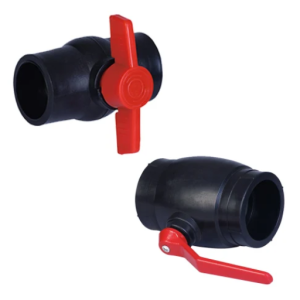
Therefore, before purchasing socket fusion ball valves, it is essential to know how pricing structures differ among various vendors and what acceptable payment methods are. It is common knowledge that prices change depending on brand name, features attached to a given product, or even markup added by a retailer; hence, it is prudent to check listings from different sites before committing oneself. Most sellers have diversified their modes of payment into accepting credit cards (both traditional and digital), debit cards, and sometimes loans, which may be used whenever one wants to buy something big enough. Besides, one ought to consider whether any levies will be charged on shipping apart from those imposed by authorities, such as VATs. Other than these, all things must be considered while purchasing such stuff. All these factors should influence your decision-making when buying these items.
Factors Influencing the Price of Ball Valves
Several factors influence the price of socket fusion ball valves. Foremost, the material used in manufacturing, including PVC, CPVC, or higher-grade metals, makes a significant difference in cost. Secondly, valve size and pressure rating affect the price because more significant and higher-rated valves are usually more expensive. Thirdly, brand reputation may impact pricing since well-known manufacturers charge a premium for their products due to high quality and dependability. Lastly, market demand and availability can lead to price changes; during peak periods of demand, costs may rise, while sales events might provide chances to make budget-friendly purchases. Considering these aspects will help consumers better understand pricing and make more informed purchase decisions.
Various Payment Methods Available
When looking for socket fusion ball valves online, customers should be familiar with different payment methods favored by most e-commerce sites today. Many merchants accept credit and debit cards, which are very convenient because they are secure. Besides, many sites support e-wallets like PayPal, Apple Pay, or Google Pay, which allow instant payment without the need to enter a card number every time it is required. On top of this, some suppliers offer financing plans where customers can pay in small amounts over time for larger orders done through them, while others still take bank transfers or checks, though at relatively more extended processing periods. Understanding these available payment methods can help streamline the buying process and enhance the shopping experience.
Billing and Order Management
Therefore, understanding the policies of top online sellers is crucial for managing bills and orders concerning socket fusion ball valve items. As a result, most websites give a comprehensive breakdown of billing options at checkout, such as total cost tax and any shipping charges if applicable to the buyer’s location. To this end order management often includes order tracking features that help consumers track how far their shipment has reached at any given moment. For example, once they make payments, clients receive confirmation emails highlighting their purchase summary mode of payment and estimated delivery dates, among other things. Many suppliers have stress-free refunding/exchanging procedures that depict their concern about customer satisfaction. Regarding the shipment of goods, proper billing, or whatever else may go wrong while ordering the items.
Reference sources
- ASTM International – Standard Specification for Polyethylene (PE) Plastic Pipe and Fittings Materials
https://www.astm.org/d3350-21.html
This document provides comprehensive specifications for polyethylene materials used in piping systems, including socket fusion ball valves. It is essential for understanding the material standards and quality requirements applicable to industrial applications. - Performance Pipe – Fittings and Fabrications Designed and Engineered for High-Density Polyethylene Pipe
https://www.cpchem.com/what-we-do/solutions/performance-pipe
This document outlines various HDPE fittings, including socket fusion ball valves. It provides detailed guidance on the specifications, standards, and installation practices, ensuring reliable performance in industrial piping systems. - ASTM International – Standard Practice for Heat Fusion Joining of Polyethylene Pipe and Fittings
https://www.astm.org/Standards/F2620.htm
This standard provides comprehensive guidelines on heat fusion techniques, including Socket Fusion Ball Valves.
Related Articles: Socket Fusion Ball Valves Application Areas



